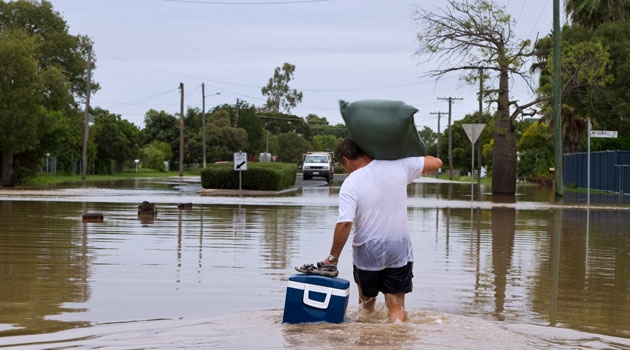Climate extremes magnify social inequalities
Column
COLUMN. “It is often those who are socially or economically marginalised that are more vulnerable and experience the biggest impacts,” writes Gabriele Messori, Associate Professor and Docent in Meteorology, whose research focuses on extreme climate events.
in Meteorology at Uppsala University.
Photo: Mikael Wallerstedt
The world is seeing increases in a range of extreme climate events, and Sweden is no exception. The summer of 2018 brought unprecedented high temperatures and drought across most of the country, and more recently several precipitation records were broken in central Sweden. Due to the ongoing climate change, we can expect more climatic records to be broken in the future, and what is today an unprecedented extreme may become the norm.
As a climate scientist, my interest in climate extremes has largely been limited to their physical origin and predictability. The questions I have asked myself over the past years were along the lines of: Do we know why a given climate extreme happens? Can we forecast when and where it will happen? Can we project whether it will become more or less likely in the coming decades? For a long time, I thought that this pretty much covered it: the physical origin of extreme events is an interesting scientific topic, and the predictability aspect has a clear societal value.
Recently, I happened to sit on a train with a colleague working on political ecology who opened my eyes to the fact that, from a societal perspective, the interesting part starts when the extreme climate event finishes. Extreme events exacerbate pre-existing social inequalities: it is often those who are socially or economically marginalised that are more vulnerable and experience the biggest impacts. For example, in recent flooding events in large urban centres in the southern U.S.A., Black and Hispanic minorities have been disproportionately affected compared to middle and upper-income white communities. This may be blatantly obvious to a social scientist, but it is something that many climate scientists have not thought about very much.
Conversely, I discovered that making predictions – for example trying to build a scenario for how a future, unprecedented flood, may affect the different societal groups in a given city – is unusual in many social sciences. This is in contrast to climate science, where forecasts and projections are routine efforts.
Why, then, not combine the social science research on unequal impacts of climate extremes with the predictive tools offered by climate science? This is exactly what myself and my colleague have been trying to do since that fateful train ride. Initial results have been promising, and we are currently developing a range of scenarios for the impacts of future, unprecedented climate extremes on different societal groups. We call it the Social-Environmental Extremes Scenarios Approach. This joint approach is key to ensure a societally just adaptation to future climate extremes, since the first step to reduce inequalities is to become aware of them.
Gabriele Messori, Senior Lecturer, Associate Professor, Department of Earth Sciences, Uppsala University
Find out more
Gabriele Messori researches extreme climate events in the mid and high-latitudes. Together with colleagues from hydrology and the social sciences, he has recently co-authored a perspective on Social-Environmental Extreme Scenarios: Scenarios of Human Responses to Unprecedented Social-Environmental Extreme Events

